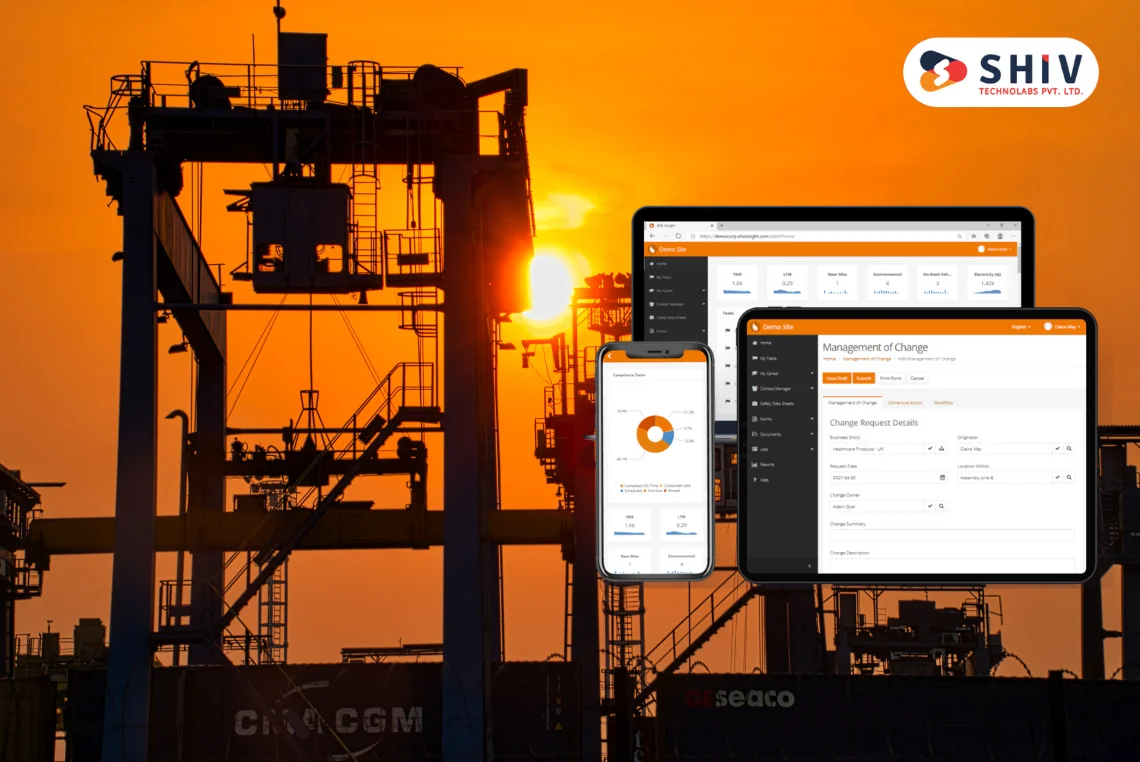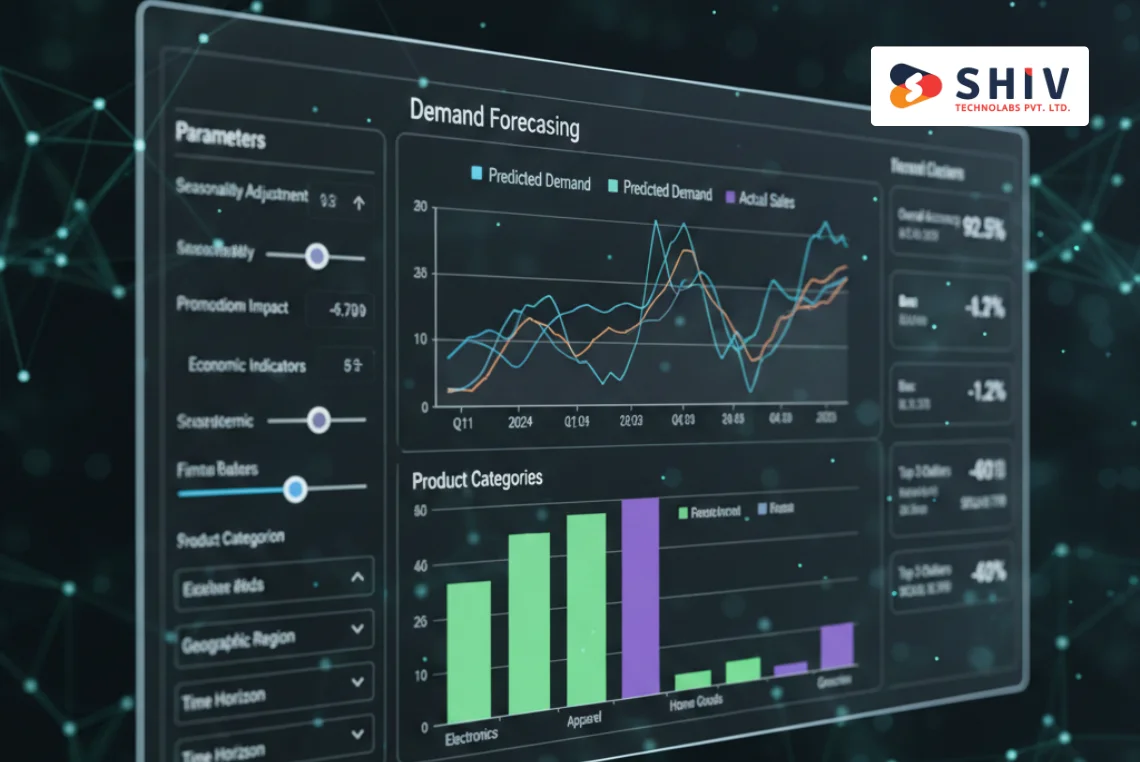Table of Contents
Pharmacies are moving away from manual billing toward intelligent software systems that reduce paperwork, track insurance claims, and prevent costly errors. With healthcare transactions growing more complex each year, billing automation has become essential for smooth operations.
According to Statista, the global pharmacy management software market is expected to surpass $9.5 billion by 2025, driven by the rise in digital prescriptions and e-pharmacy platforms. Billing software is at the center of this shift—it handles every payment, claim, and report in a single dashboard.
If you’re planning to develop a custom software for pharmacy billing or purchase one, it’s important to know how pricing works. This guide breaks down the real cost of pharmacy billing software, what factors influence it, and which model gives better long-term value.
What Does Pharmacy Billing Software Do for Pharmacies?
Pharmacy billing software is a digital system that manages all financial and administrative tasks related to prescriptions, sales, and insurance claims. It helps pharmacies handle transactions faster, minimize human errors, and stay compliant with healthcare regulations such as HIPAA or GDPR.
In simple terms, it’s the engine that keeps your pharmacy’s financial process organized and error-free. Whether you run a small local store or a multi-branch pharmacy chain, billing software ensures every bill, claim, and inventory record is tracked accurately.
Key functions include:
- Generating and managing patient invoices
- Processing insurance and third-party claims
- Tracking inventory and purchase orders
- Managing payment reconciliation
- Creating tax and financial reports
Pharmacies that invest in such systems experience faster reimbursements, fewer claim denials, and higher customer satisfaction—all while saving significant time on administrative tasks.
What Factors Determine the Cost of Pharmacy Billing Software?

The cost of pharmacy billing software isn’t fixed — it varies depending on how complex the system is and what you expect it to handle. Let’s go through the main factors that influence pricing.
1. Type of Software – Cloud vs On-Premise
The deployment method makes a big difference in cost.
- Cloud-based systems are hosted online and accessed through subscription plans. They’re easier to maintain, with pricing usually between $50–$250 per month, depending on usage and features.
- On-premise systems require installation on local servers. The upfront investment ranges from $5,000–$25,000+, but you get more control over data and customization.
2. Features and Modules Included
Each added module increases both functionality and development cost.
| Feature | Estimated Cost Range (USD) | Purpose |
|---|---|---|
| Billing & Invoicing | $1,000 – $3,000 | Automates transaction entries and receipts |
| E-Prescription & Claims | $1,500 – $4,000 | Simplifies claim verification |
| Inventory Management | $2,000 – $5,000 | Tracks stock, expiry, and suppliers |
| Reporting & Analytics | $1,000 – $2,500 | Provides insights into revenue trends |
| Multi-store Integration | $2,000 – $4,000 | Centralizes billing for chain pharmacies |
3. Customization Level
A ready-made product is faster to implement but offers limited flexibility.
Custom-built pharmacy billing software, however, adapts to your pharmacy’s workflow and supports unique modules—though it costs more upfront.
4. Development Team Location
Where your software is developed plays a major role in determining the total cost. Developer hourly rates and project pricing vary based on regional economies and experience levels.
Here’s a quick look at the average pharmacy billing software development cost across major countries:
| Country | Hourly Rate (USD) | Estimated Project Cost (USD) |
|---|---|---|
| United States | $80 – $150 | $30,000 – $65,000 |
| United Kingdom | $60 – $110 | $25,000 – $55,000 |
| Australia | $50 – $100 | $20,000 – $50,000 |
| India | $25 – $40 | $8,000 – $20,000 |
| Canada | $60 – $120 | $25,000 – $60,000 |
For startups and mid-size pharmacies, outsourcing to India remains the most cost-efficient option. Indian teams often deliver the same technical expertise and compliance readiness at a fraction of Western development rates — ideal for long-term scalability without compromising quality.
5. Integration and Compliance Requirements
Integration with ERP, POS, or insurance systems, along with compliance to HIPAA or GDPR, can add 10–20% to the total cost due to security and testing efforts.
In short, the more customized, integrated, and compliant your system needs to be, the higher the overall investment — but also the greater long-term efficiency and control.
Pharmacy Billing Software Cost Breakdown (By Scale)

Pharmacy billing software costs vary widely depending on your operational size, the number of branches, and required integrations.
A single-store setup might only need basic billing and inventory tools, while a multi-branch pharmacy chain may require claim management, AI-based analytics, and secure cloud hosting.
Here’s a cost breakdown based on business scale and functionality:
| Type of Solution | Estimated Cost Range (USD) | Best Suited For | Key Highlights |
|---|---|---|---|
| Basic Billing App | $5,000 – $8,000 | Independent pharmacies | Core billing, sales tracking, and limited reports |
| Mid-Level System | $10,000 – $18,000 | Regional or growing chains | Claims, prescriptions, and inventory control |
| Enterprise Custom Platform | $20,000 – $35,000+ | Hospitals and large retail chains | Custom modules, AI analytics, compliance automation |
| Cloud Subscription Model | $50 – $500/month | SMEs with remote teams | Monthly pricing, low setup cost, regular updates |
Quick takeaway:
Small pharmacies can begin with ready-made or mid-tier systems, while larger networks benefit more from custom-built solutions designed around scalability, integration, and automation.
Custom vs Off-the-Shelf Pharmacy Billing Software
When evaluating pharmacy billing solutions, the biggest decision is whether to build custom software or buy an existing one.
Each option has its own pricing model, flexibility, and ownership structure. Understanding the difference helps in aligning your investment with your pharmacy’s goals.
| Aspect | Custom Software | Off-the-Shelf Software |
|---|---|---|
| Ownership | Full ownership and long-term control | Limited to license terms |
| Cost | Higher initial cost, no recurring license fees | Lower upfront cost, recurring monthly fees |
| Customization | Tailored to your workflow and compliance needs | Limited flexibility beyond core features |
| Integration | Easy to connect with ERP, POS, or CRM systems | May require additional plugins or APIs |
| Data Security | Dedicated security protocols and hosting | Shared infrastructure and vendor dependency |
| Maintenance | Controlled by your IT team or partner agency | Managed by the software vendor |
| Ideal For | Pharmacies seeking scalability and automation | Small setups with basic billing needs |
Example scenario:
A small local pharmacy may choose an off-the-shelf system like PrimeRx or Liberty Software to start quickly at $100–$300/month. However, as operations expand—especially across multiple stores—a custom-built solution provides long-term savings, better data privacy, and compliance control.
In most cases, a custom-built system becomes more cost-effective after one to two years, especially if you want specific modules like AI-based claim checks or real-time inventory forecasting.
Cost Comparison – Custom Development vs Ready-Made Tools
Choosing between custom-built software and ready-made pharmacy billing tools affects not just your initial spend but also long-term flexibility, data security, and scalability.
Below is a closer look at how the two compare in terms of pricing and capability.
| Software Type / Tool | Pricing Model | Approximate Cost (USD) | Best For |
|---|---|---|---|
| Custom-Built Pharmacy Billing Software | One-time or milestone-based | $15,000 – $35,000+ (depending on modules) | Pharmacies seeking long-term scalability and data control |
| Liberty Software | Subscription | $200 – $400/month | Retail and independent pharmacies |
| PrimeRx | Subscription | $250 – $500/month | Pharmacies managing prescriptions and insurance |
| Rx30 | Subscription | $150 – $350/month | Independent pharmacies and medical stores |
| BMS PharmaSuite | License | $10,000 – $20,000 | Hospital and enterprise setups |
Analysis:
- Ready-made tools work best when you need a quick, low-cost deployment.
- However, recurring subscription costs can exceed $5,000 annually, and customization remains limited.
- Custom development offers total ownership and flexibility — features can grow with your business and integrate with ERP, CRM, or AI-based analytics.
Quick insight:
For short-term use, ready-made software is cheaper upfront. But if you aim for long-term savings and data security, custom development gives you far more control and scalability over time.
Additional Expenses to Consider
Beyond development, several ongoing and hidden costs affect the total pharmacy billing software budget. These expenses often go unnoticed during the planning phase but have a major impact on yearly maintenance and performance.
| Expense Type | Approximate Cost (USD) | Purpose |
|---|---|---|
| Staff Training & Onboarding | $500 – $2,000 | Educating pharmacists and staff on the new system usage |
| Software Maintenance | 15–20% of annual development cost | Regular updates, bug fixes, and security patches |
| Data Backup & Storage | $100 – $500/year | Protects sensitive billing and prescription data |
| Cloud Hosting Fees | $30 – $300/month | Required for SaaS and hybrid deployments |
| Compliance & Security Audits | $1,000 – $3,000/year | Keeps your system aligned with HIPAA/GDPR norms |
Hidden costs to watch out for:
- Integration charges for connecting POS, ERP, or insurance systems
- Feature updates as pharmacy regulations change
- Third-party APIs for e-prescriptions or insurance claim validation
Quick insight:
Planning for these recurring costs helps maintain long-term performance and compliance. While the initial investment covers design and development, ongoing maintenance keeps the system secure, fast, and compatible with new healthcare regulations.
Partner with Shiv Technolabs for Pharmacy Billing Development
Choosing the right technology partner makes all the difference in how smoothly your pharmacy runs. At Shiv Technolabs, we specialize in building custom pharmacy billing systems that handle claims, invoices, and reports with precision.
Our team understands the challenges of healthcare billing — from compliance and insurance validation to managing multiple outlets. We create HIPAA-compliant, cloud-ready platforms that simplify your daily operations while keeping patient data secure.
We also design AI-powered modules for claim prediction, fraud detection, and inventory forecasting, helping pharmacies make informed financial decisions. Whether you’re upgrading an old system or starting fresh, our developers deliver scalable solutions tailored to your needs.
Get a pharmacy billing system that saves time, reduces errors, and grows with your business — all built by Shiv Technolabs.
Conclusion
Pharmacy billing software has become a vital part of modern healthcare operations. Whether you’re managing a single store or multiple branches, it simplifies billing, speeds up claim approvals, and strengthens compliance with medical data regulations.
The overall cost depends on the level of customization, development region, and additional modules like inventory or AI analytics. While off-the-shelf tools suit smaller setups, a custom-built solution offers better long-term control and scalability.
If you’re planning to digitize your pharmacy’s billing process, Shiv Technolabs can help you build a secure, efficient, and fully compliant system tailored to your needs.
Connect with our experts today to get an accurate project estimate and development roadmap.
FAQs
1. How much does pharmacy billing software cost?
The average cost ranges from $5,000 to $35,000, depending on modules, scale, and development location. Cloud subscriptions usually start around $50–$250 per month.
2. What affects the cost of pharmacy billing software the most?
Pricing depends on the number of features, customization level, data security requirements, integrations with ERP or POS systems, and compliance with healthcare regulations.
3. Is it cheaper to buy or build pharmacy billing software?
Buying an off-the-shelf tool is cheaper initially, but custom development offers better scalability, data control, and long-term savings once your pharmacy expands.
4. How long does it take to develop pharmacy billing software?
Most projects take 8 to 16 weeks, depending on the number of modules, design complexity, and third-party integrations required.
5. Can pharmacy billing software process insurance claims automatically?
Yes, modern systems can validate and submit insurance claims automatically, reducing manual paperwork and improving reimbursement accuracy.
6. Is cloud-based pharmacy billing software secure?
Yes. With HIPAA and GDPR compliance, cloud-based systems use encryption, access control, and regular audits to keep sensitive data protected.
7. Can AI features be added later to pharmacy billing software?
Yes, AI modules such as predictive analytics, fraud detection, and automated claim verification can be added anytime without rebuilding the entire system.

![How Much Does Pharmacy Billing Software Cost Here’s the Breakdown [2025]](https://shivlab.com/wp-content/uploads/2025/10/How-Much-Does-Pharmacy-Billing-Software-Cost-Heres-the-Breakdown-2025.webp)





















